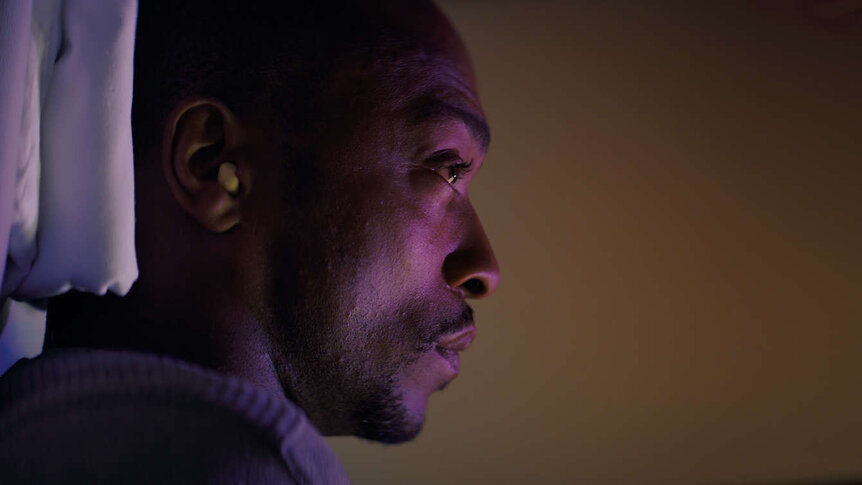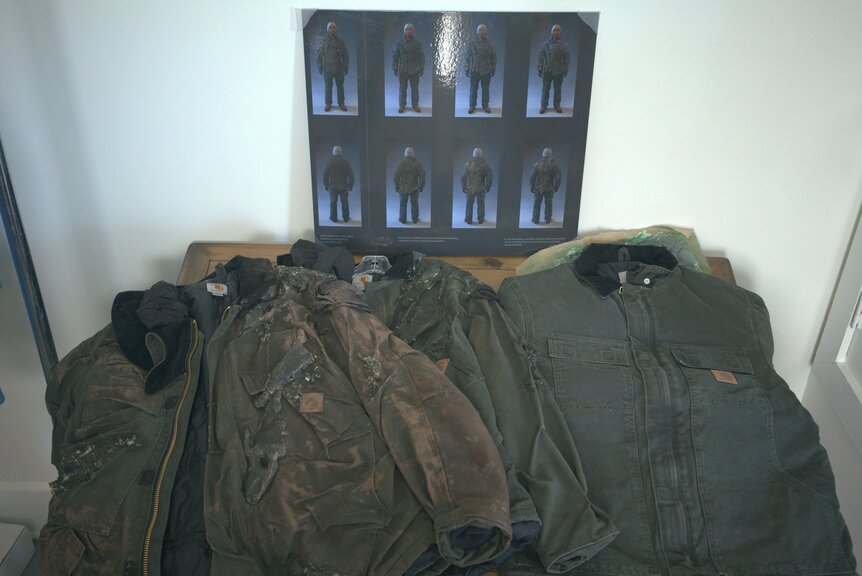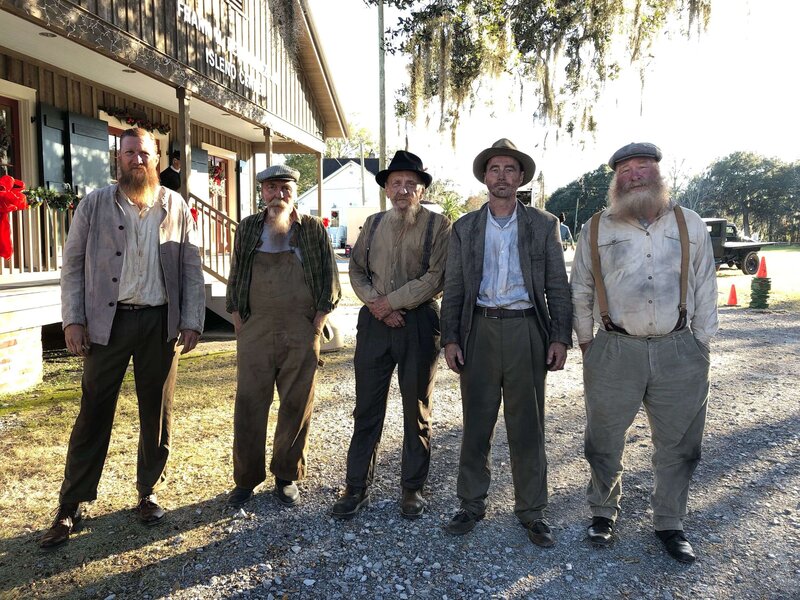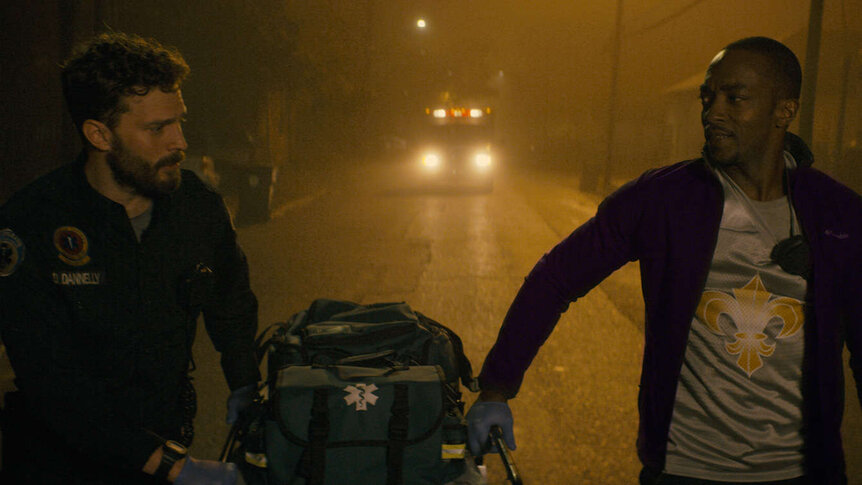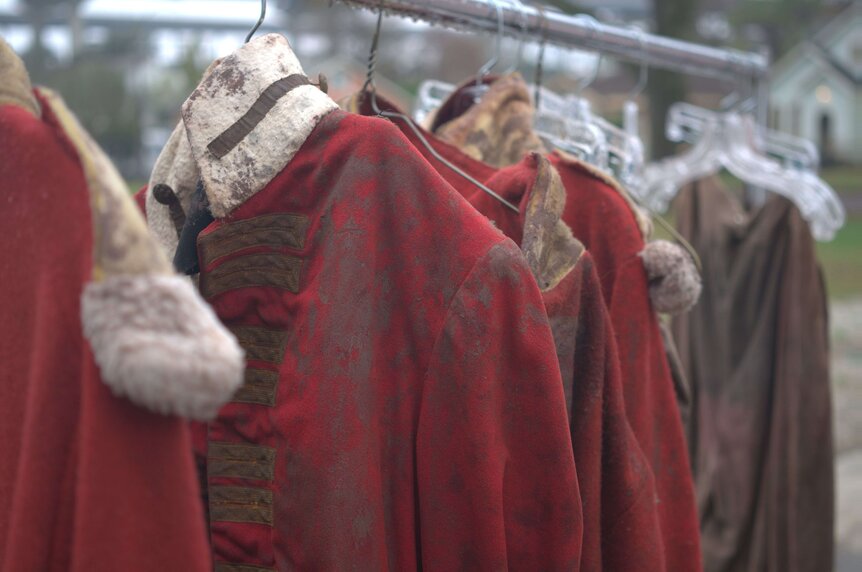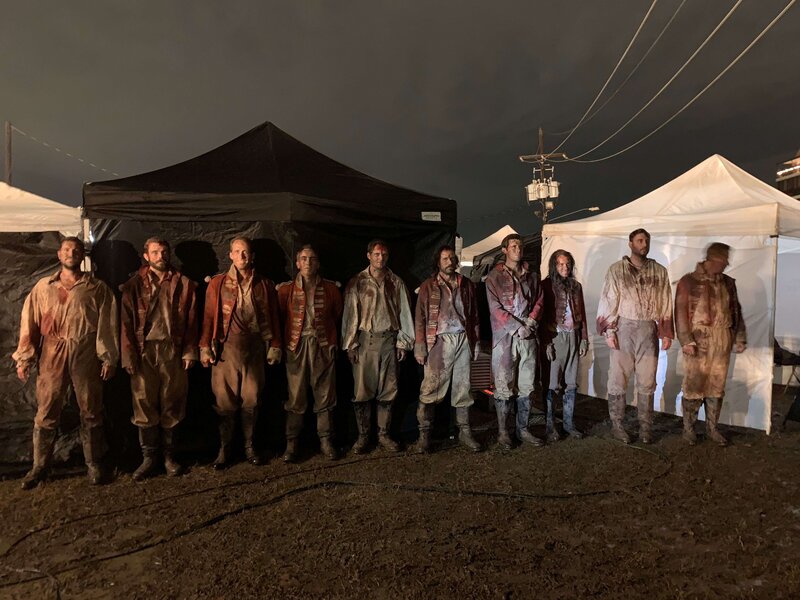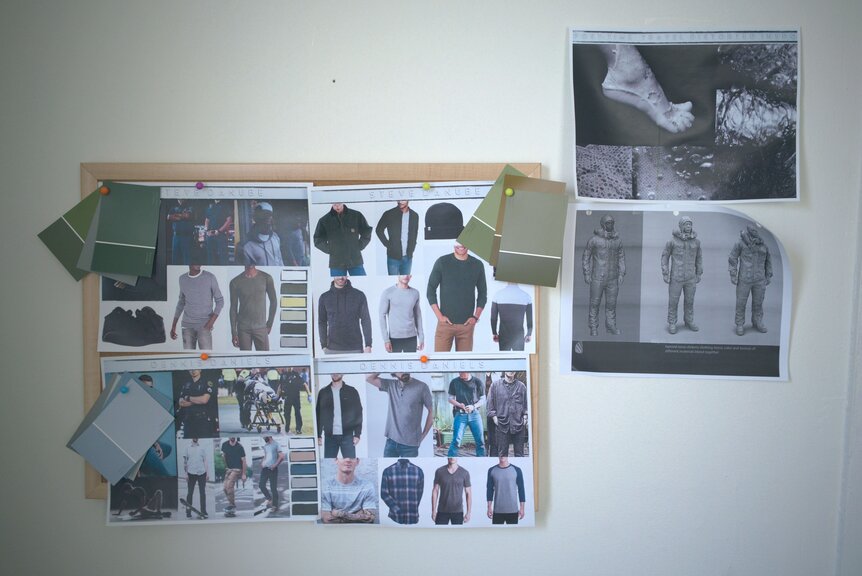Create a free profile to get unlimited access to exclusive videos, sweepstakes, and more!
The costume design secrets behind sci-fi horror Synchronic
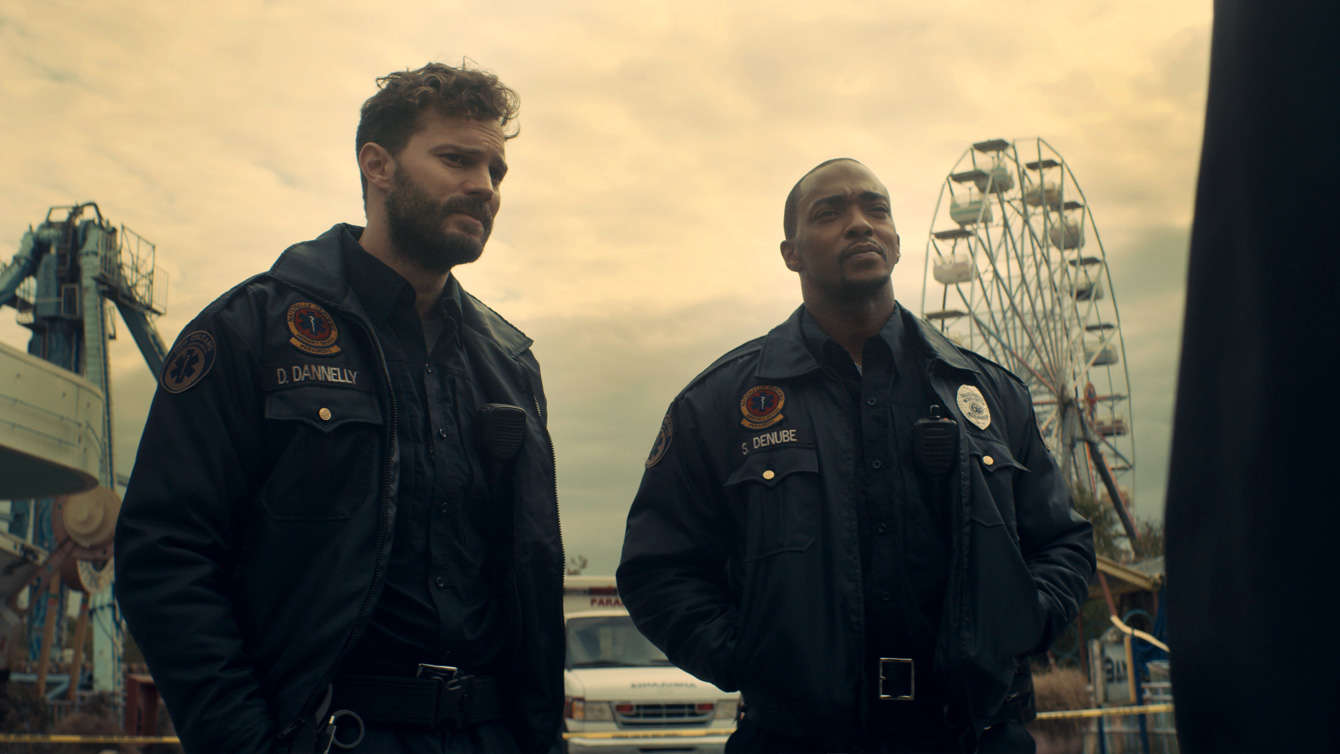
Designer drugs are a science-fiction staple that grants a character a heightened version of the world, whether to experience another person's memories, expand their mental acuity, or even slow the perception of time. In the new sci-fi horror Synchronic, Anthony Mackie and Jamie Dornan star as Steve and Dennis, two New Orleans paramedics who witness the troubling side effects of a new drug that distorts reality. When personal and professional obligations collide, the terrifying power of this new pill takes them on a mind-bending journey through time.
Existing in a recognizable environment, the costumes are a big factor in balancing the fantastical fragmented narrative. Laura Cristina Ortiz was tasked with designing garments ranging from the Ice Age to the Battle of New Orleans in 1815, as well as contemporary looks to ground the action. SYFY FANGRRLS recently jumped on the phone with Ortiz to discuss how she created distorted time travel attire on an indie budget, why she strives to use ethical resources, how she will be celebrating the release of Synchronic, and her path to becoming a costume designer.
"We had to create a mechanic for time travel and different time periods. So as a costume designer, you're giving me a buffet of creativity," Ortiz explained about what initially attracted her to Synchronic. Having previously worked with directors Justin Benson and Aaron Moorhead, and producer David Lawson Jr. on the V/H/S Viral "Bonestorm" installment, Ortiz emailed them when the project was announced to inquire about the department head roles. She still had to interview for the position even though she had a previous professional relationship, noting, "Everyone had to really prove themselves that they were right for the project."
After she was sent the script, Ortiz made 60 costume boards which she said is "probably the most elaborate board presentation I've done for an interview." Enlisting the help of a friend, she recruited illustrator Aldo Katayanagi, and he helped her produce illustrations and 3D models to outline her vision (see below). After Benson and Moorhead expressed excitement and told her this was the way they wanted to go, she found out she had the job at the Halloween party she hosts annually — a party that has been sadly been canceled this year.
Other than some changes to the visual mechanic that would depict the effects of time travel, Ortiz said, "For the most part the general idea creatively lined up pretty closely." Early conversations with Benson, Moorhead, and production designer Ariel Vida helped establish the rules that would be reflected in the costumes of any character taking the synthetic drug, "Any time someone time traveled in the script, elements about them changed." Returning from the past causes clothing to degrade, which is part of the overall physical impact. "Creative teams will come up with really small details and some will translate on to camera and people will pick up," which is a vital part of the Synchronic aesthetic.
Preproduction prep for Ortiz included a lot of research with her costume supervisor, Mandy Pauline in Los Angeles. "We spent days at the Western Costume Library just going through books and researching all the different time periods," she said, "Even though we see the different time periods for flashes and small bits of time, how are we going to present this one character who's supposed to be from this time period?" This informed the transitional moments and how to effectively and efficiently convey era and place. "Having time to do that deep dive in terms of research, articles, and books was such a blessing and so much fun," Ortiz explained about a process that is not always available working in the "indie-sphere." From a mid-18th century Spanish conquistador walking through a Louisiana swamp to members of the KKK in 1933, Ortiz had a range of historical garments and periods to build and acquire from rental houses and thrift stores.
One challenge was constructing Steve's principal time travel ensemble, which sees him donning a Carhartt jacket, jeans, and work boots — and gloves if needed. Because they didn't have the budget or time to build every coat from scratch, Ortiz needed 12 multiples of the same jacket to represent the different stages of distortion and distressing — doubles were also required for stunts. "We actually had 22 coats we were working with and ultimately combined, broke down, opened up, and redraped the fabric to have that key set of 12," she described the process. Working with in-house tailor Brik Allen, each coat had a key to designate its place in the script, "We had this little army of dark green Carhartt jackets that lived in our world."
"Narratively you need that anchoring point if you're doing something out of this world, you need something the audience can relate to," is how Ortiz describes the impetus behind the muted palette and regular attire worn by the two leads. While taupes and browns are predominant in the past settings — particularly 1933 — Ortiz chose contemporary hues "to provide that contrast for when we're seeing these different worlds and time periods." She added that it also reflects the overall mood, "You have Dennis and Steve dealing with very depressive situations in their personal lives." Additionally, she didn't want them to read as overtly trend-heavy, which is why their fashion taste is "exceptionally ordinary."
Steve and Dennis's introduction quickly establishes their friendship, while also referencing the location. "I usually like to call out the location in the narrative and in my design," Ortiz remarked about the Saints shirt Steve is wearing — Mackie is also from New Orleans, so the fleur-de-lis was a nod to him too. Steve has picked up the wrong jacket on his way to work, which Dennis playfully makes fun of him for and this establishes their close bond. The accidental hook-up clothing acquisition is a women's Columbia jacket and Ortiz purposefully got a smaller size. "It was this lady's workout jacket and we wanted it to be a small comedic moment."
The contemporary locations and fragmented time periods are purposeful — in one scene set in the present Steve and Dennis sit outside Anne Rice's house in the Garden District. Another reference to the city is when they are called to treat a person whose costume is inspired by Baron Samedi — the loa of the dead in Haitian Voodoo. This scene not only touches on the overall themes but also "changes your perception" and makes the viewer question what is real.
Another reference point is the Battle of New Orleans in 1815 that saw the United States Army face-off against the red coat-wearing British. The latter is one of the only uses of bold color in Synchronic and the search for accurate uniforms that matched this particular conflict was "surprisingly trickier" than Ortiz expected. Additionally, Ortiz had to acquire garments they could muck up with the appropriate level of grime, dirt, and mud so this had to be taken into budgetary consideration. None of the US costume houses had this specific military uniform and they had to think of an alternate source. "Thank God for social media," she quipped when detailing her LA costume supervisor's Facebook and Instagram search for people who took part in battle reenactments. This is how she found Timothy Pickles, a historical and military consultant who she described as "the encyclopedia when it came to battles" (Pickles sadly passed away this spring).
They needed 15 to 20 uniforms, but Pickles only had five to lend them so Ortiz contacted UK-based Angels as this was the only costume house that had additional uniforms. "They were really great in terms of being able to tell us what all the details were in conjunction with Timothy, but once again running into constraints of what we had available financially for the department."
Finding a cost-effective solution meant purchasing inexpensive revolutionary costumes and using the information from Pickles' uniforms to embellish the Halloween red coat garments. "I chopped up a huge blanket from Joann and to make epaulets and we created look-alike costumes for the deep background that were just going to be the dead bodies." The designer added, "Once we were able to cover everybody in this mud and blood, you couldn't discern what are Halloween mock-up costumes were from the real thing, because we copied all the details." There are some tell-tale signs including switching beautiful wool for polyester and some of the braiding on the coats was missing. Ortiz described the jubilant high fives with her team when they successfully surmounted this obstacle, particularly as they did it within the budget constraints.
For the Spanish conquistador, the designer had to take the swamp environment into consideration so while the actor is wearing the armor, undergarments, and 18th-century shoes, some aspects were omitted because "they wouldn't read because of the action that was required." This costume and elements of the Ice Age figure were rentals from Western Costume, whereas she used United*American Costume Company for the specific early '30s KKK costumes. She also shopped at local Goodwill stores for the latter. Removing collars was one way to make it look period-accurate on an indie budget.
Ethical and sustainable fashion is something Ortiz feels passionately about as she described the "hands that are behind" the garments as a contributing factor. Part of this is to do with the issues of mass production and the environment, but there is a family history aspect too. Ortiz's grandmother moved from Puerto Rico in the 1950s to New York where she worked in the garment sweatshops and she is the third generation in her family to pursue a career in this industry. While there are demands on a film set — such as multiples required like the Carhartt coat — she also added that as a designer that within the demands of the project, "You have a choice to make and you definitely have a responsibility."
Opting to use smaller sustainable companies such as Tastemaker belts and shoes and vegan brand BeetxBeet for some of Brianna's tops is one avenue Ortiz took. The majority of Dennis and Steve's closets were thrift shopped at places like Buffalo Exchange and Crossroads. Not only are these garments ethical, but it also ensures the overall aesthetic will be unique. "If every film was shopping at the same stores, you will see repeat pieces." This one-off look route is far from limiting and it is important to Ortiz as a designer and department head, which also draws on her family history.
"I come from a line of women who have worked, hustled, and tried to make their way. I couldn't do what I did if my grandmother and aunt didn't make waves and make the first step," she explained when she talked about her path into costume design. At 13, Ortiz learned how to sew because she got into cosplay and making costumes. She went to community college before going to the Fashion Institute of Technology in New York City where she worked diligently on her portfolio and "had the guidance of her aunt to give her feedback." She worked at the Disney Store in Times Square and because she lived at home she could get experience volunteering on student film sets to build up those relationships. "It is so incredible to say I can make a living full time off the arts," exclaimed Ortiz.
A lack of opportunities if you can't work for free early in your career is one reason why the designer says, "The arts are something that is inaccessible to so many people as a career choice." Ortiz thinks it is important to "Pass it down, reach behind you and support the next wave of people...The Latin community is one of the most underrepresented communities in the entertainment community." Ortiz had an encounter with an established Latina costume designer that made an impact early in her career.
Mayes C. Rubeo made Oscar history in 2020 as the first Latina ever to be nominated in the Best Costume Design category — the previous year Ruth E. Carter became the first Black person to win this award. Ortiz talks about meeting Rubeo in 2013 at San Diego Comic-Con and how this meeting inspired her. "It is so impactful. Mayes was really kind." A recent correspondence after she discovered the photo from SDCC and a virtual Costume Designers Guild LatinX panel that took place in September underscores the full-circle nature of this experience. Rubeo had to cancel her appearance due to travel but the surreal nature of this moment was not lost on Ortiz. "That was 2013 and it's 2020, we were about to be on the same panel to talk about our experiences being Latina designers. That is f***ing nuts. But it is so cool and incredible."
Celebrating the release of the film on October 23 will be different from the usual fanfare, but the film did premiere at TIFF in 2019 to good reviews and a red carpet. Directors Benson and Moorhead made headlines last month when they released a statement telling ticket buyers to avoid watching it in theaters due to the pandemic, suggesting the safer drive-through option. This is how Ortiz will be watching the movie on the release date as the crew has organized a socially distanced celebration at the drive-in. For a movie that is heavy on questioning the perception of time, Ortiz describes this as the perfect viewing location. "If you're going to be going to a drive-in theater to see something that's a genre film that harkens back to the 1950s, get a milkshake, some popcorn, and be all spooky."
